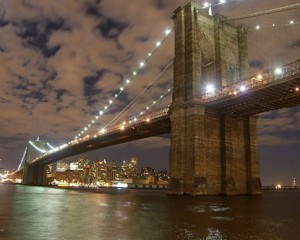 The Brooklyn case study is a very controversial issue because all sides create an unrivaled argument. The controversy concerning the Brooklyn case can be summed up in one phrase, Develop Don’t Destroy Brooklyn. Brooklyn is currently facing city growing pains when compared to its neighbor Manhattan and developers such as, Bruce Ratner, are seizing the opportunity to rebuild. “Ratner has proposed a $1.2 billion residential and commercial center built over the Atlantic Avenue Rail Yards in downtown Brooklyn” (PBS.com). This project would tear down a mix of deserted storefronts, empty lots and mom/pop businesses in order rebuild blocks of stylish lofts and brownstones. Atlantic yards manager, Jim Stuckey, estimates that in New York there is a need for over 65,000 units of housing, at all levels. The problem that the people of Brooklyn are faced with is Bruce Ratner does not want to further develop the city; he wants to destroy and recreate the city. Another proposal made by Marty Markowitz is a $435 million 18,000-seat sports arena, new home for the NBA’s New Jersey Nets. Markowitz believes that bringing in a new sports arena would be, “a good way of infusing the municipality in which it’s in with that pride and spirit.” One thing is for certain, that Brooklyn is in need of something but not necessarily a new makeover.
The Brooklyn case study is a very controversial issue because all sides create an unrivaled argument. The controversy concerning the Brooklyn case can be summed up in one phrase, Develop Don’t Destroy Brooklyn. Brooklyn is currently facing city growing pains when compared to its neighbor Manhattan and developers such as, Bruce Ratner, are seizing the opportunity to rebuild. “Ratner has proposed a $1.2 billion residential and commercial center built over the Atlantic Avenue Rail Yards in downtown Brooklyn” (PBS.com). This project would tear down a mix of deserted storefronts, empty lots and mom/pop businesses in order rebuild blocks of stylish lofts and brownstones. Atlantic yards manager, Jim Stuckey, estimates that in New York there is a need for over 65,000 units of housing, at all levels. The problem that the people of Brooklyn are faced with is Bruce Ratner does not want to further develop the city; he wants to destroy and recreate the city. Another proposal made by Marty Markowitz is a $435 million 18,000-seat sports arena, new home for the NBA’s New Jersey Nets. Markowitz believes that bringing in a new sports arena would be, “a good way of infusing the municipality in which it’s in with that pride and spirit.” One thing is for certain, that Brooklyn is in need of something but not necessarily a new makeover.
In my opinion, I find this case to be very challenging because it is a situation of having to strategize a plan for facility financing. Any time a city wants to redevelop as a way to bring in more people, money or even expand always involves a risk. I believe the best strategy for facility financing would be to start small while allowing for growth. Marty Markowitz proposal for adding a sports arena in one of the vacant lots is not only a cheaper solution, but it also helps develop the city instead of destroying it. Markowitz plan is risky, but not too risky considering it will take less amount of money to build. In the article, The Strategy for Urban Tourism, the city of Bilbao was in a similar situation. Bilbao was once known for producing iron, steel, and ship building industry and also acted as a port along its border. Due to exposure of competition, it caused the factory to close its doors leaving many people without jobs and others relocating. Bilbao was once a very successful populated area that turned into a vacant lot. “Local authorities knew something had to be done so they created a plan to reconstruct the area as well as its image” (). By providing a new airport and metro helped the city on its way back to repopulation. The airport and metro helped, but the key factor was the Guggenheim museum they had created. The tourist attraction had brought in many jobs as well as making it a destination city. The city of Bilbao did not have to reconstruct their entire city in order to bring in more people. By simply just adding a tourist attraction gave the city steps towards being a tourist attraction. I believe that by replacing the Nets arena and moving it to Brooklyn would give them another chance to help clean up their city. In addition, there would be a need for the arena because it would be replacing the other one in Manhattan and would be less risky. Also, by bringing more traffic into Brooklyn it would help business revenue, which could possibly lead to further reconstruction and growth. Business owners are not going to want to take the risk of investing more money into their company unless they see future possibilities and outcomes. Once the arena is showing success as well as surrounding existing business, then I would plan to create larger developing projects.
Overall, there are many different strategies to facility financing. I believe the best way to strategize would be to start small. Tourist attractions such as sports arenas are a guarantee for revenue. If the sports arena did fail in some way, at least the risk was not as high as rebuilding a new city. Furthermore, once things start to progress from the arena then developers should plan additional developments. Another strategy would be to research similar cities and see what worked for them. After researching, take into consideration of the possible outcome for the city’s business and residents; also look at the financial aspect of the project. Once all areas have been filled then come up with a couple of strategies for a committee board to vote one and make the final decision.